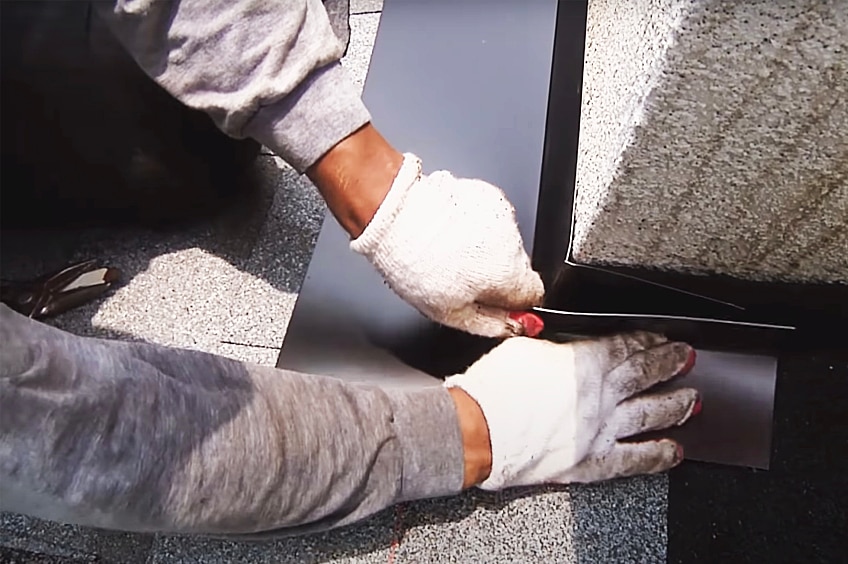Roof flashing forms an integral part of any roofing system by helping to protect the home against water infiltration. So what is roof flashing, exactly, and how does it work?
Read on to understand what flashing is, why it's important, and how to tell if you may be having flashing problems that require professional repairs.
What Does Roof Flashing Do?
Roof flashing helps to provide a seal wherever there is a roof joint or penetration (like a chimney or vent), where there is an intersection of two roof surfaces, or where the roof meets an exterior wall.
Flashing protects these areas by acting both as a barrier and as a way to direct water down and off your roof. Contractors install flashing when they install your roofing system—but you can always hire a roofing professional to add or improve roof flashing after installation.
What Is Roof Flashing Made Of?
These days, most roof flashing is made of metal, including galvanized steel, copper, zinc, aluminum, and stainless steel. Metal flashing can be preformed to fit general specifications or hand-cut to fit your unique roof design.
A trusted contractor can help you choose your flashing material based on your roofing system and the climate you live in. Once the material is chosen, roofers fit it around penetrations like chimneys and vents, lay them in roof valleys, step layer them with shingles, and secure any other water-prone areas. A properly installed roof flashing is most effective when paired with a reliable roofing system.
What Are Signs of Roof Flashing Problems?
Although roof flashing is durable, flashing can deteriorate over time and become damaged or loose, which can lead to leaks. It's a good idea to perform an annual check to identify roof flashing problems to help prevent potential issues.
You can check the inside of your roof from your attic and perform an exterior check by walking your home's perimeter with a pair of binoculars—but don't climb onto your roof! It's dangerous to you and potentially damaging to your roof as well.
Inside the home, check for:
- Leaks into your home, garage, or porch
- Ceiling water stains
- Visible water dripping down the backside of decking or a chimney in the attic space
- Attic water stains
- Daylight shining around ceiling vents or pipes in your attic
From the ground outside your home, check for:
- Loose, damaged, or missing shingles
- Loose, damaged, or missing flashing
Any of these could signal a problem with your flashing, or they could point toward other issues that may be causing leakage. Either way, if you see any of these indicators, it's a good idea to have a professional look at your roofing system right away.
Ready to have a trusted pro inspect your roof flashing or address a leak? Find GAF-factory certified roofing contractors* ready to handle the job.
*Contractors enrolled in GAF certification programs are not employees or agents of GAF, and GAF does not control or otherwise supervise these independent businesses. Contractors may receive benefits, such as loyalty rewards points and discounts on marketing tools from GAF for participating in the program and offering GAF enhanced warranties, which require the use of a minimum amount of GAF products.

